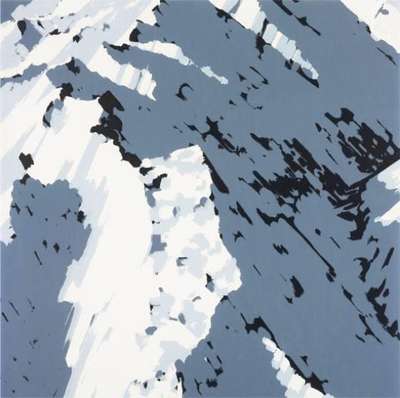
Schweizer Alpen I - B1

Schweizer Alpen I - B1
Signed Print
Gerhard Richter
£16,000-£23,000Value Indicator
$35,000-$50,000 Value Indicator
$29,000-$40,000 Value Indicator
¥150,000-¥220,000 Value Indicator
€19,000-€27,000 Value Indicator
$160,000-$240,000 Value Indicator
¥3,030,000-¥4,350,000 Value Indicator
$21,000-$30,000 Value Indicator
AAGR (5 years) This estimate blends recent public auction records with our own private sale data and network demand.
There aren't enough data points on this work for a comprehensive result. Please speak to a specialist by making an enquiry.
Medium: Screenprint
Edition size: 300
Year: 1969
Size: H 70cm x W 69cm
Signed: Yes
Format: Signed Print
TradingFloor
Track this artwork in realtime
Watch artwork, manage valuations, track your portfolio and return against your collection
Track auction value trend
Auction Results
| Auction Date | Auction House | Location | Hammer Price | Return to Seller | Buyer Paid |
|---|---|---|---|---|---|
| November 2024 | Van Ham Fine Art Auctions | Germany | |||
| November 2024 | Van Ham Fine Art Auctions | Germany | |||
| November 2024 | Nosbüsch & Stucke | Germany | |||
| September 2024 | Venator & Hanstein | Germany | |||
| June 2023 | Van Ham Fine Art Auctions | Germany | |||
| June 2020 | Germann Auctions | Switzerland | |||
| June 2019 | Ketterer Kunst Hamburg | Germany |
Meaning & Analysis
Part of the Swiss Alps collection, this Gerhard Richter print was issued in 1969 in an edition of 300. Signed by Richter himself, the work is one of a number of studies of mountainous landscapes completed by the artist during his first decade in West Germany - a country he had fled to with his wife and young family in 1961.
Gestural, semi-abstract, and entertaining only a tenuous link to its subject matter, Schweizer Alpen I - B1 (1969) is one of a number of landscape works completed by Richter during the late 1960s. Unlike the artist’s semi-realist ‘photo paintings’, such as Wolken (Clouds) (1969) or Seestück I (1969), also completed in the same year, Richter situates his depiction of the natural world towards the abstract end of the spectrum. This decision, he argued, was to explore the abstraction inherent to the natural world - a site onto which the viewer themselves is free to project meaning. Like many of his early landscapes, Schweizer Alpen I - B1 borrows motifs from Romantic painting. Invoking the sublime via the motif of the mountain, the print conjures reminiscences of Caspar David Friedrich and his instantly recognisable painting, Die Wanderer über dem Nebelmeer (Wandered above the Sea of Fog) (1818).
Commenting on his relationship to the natural world, and to romantic landscape painting in general, Richter once commented that contemporary society lacks ‘the spiritual foundation that supported romantic painting. We have lost the feeling of “God’s omnipresence in nature”. For us, everything is empty.’ This emptiness, one could argue, is referenced by the semi-referential, semi-abstracted nature of the print. Blurring the rugged contours gouged by glaciers, the viscerality of a higher presence - of a tangible sense of nature’s unstoppable power to carve up landscapes and to literally ‘move mountains’ - is lost or concealed.










